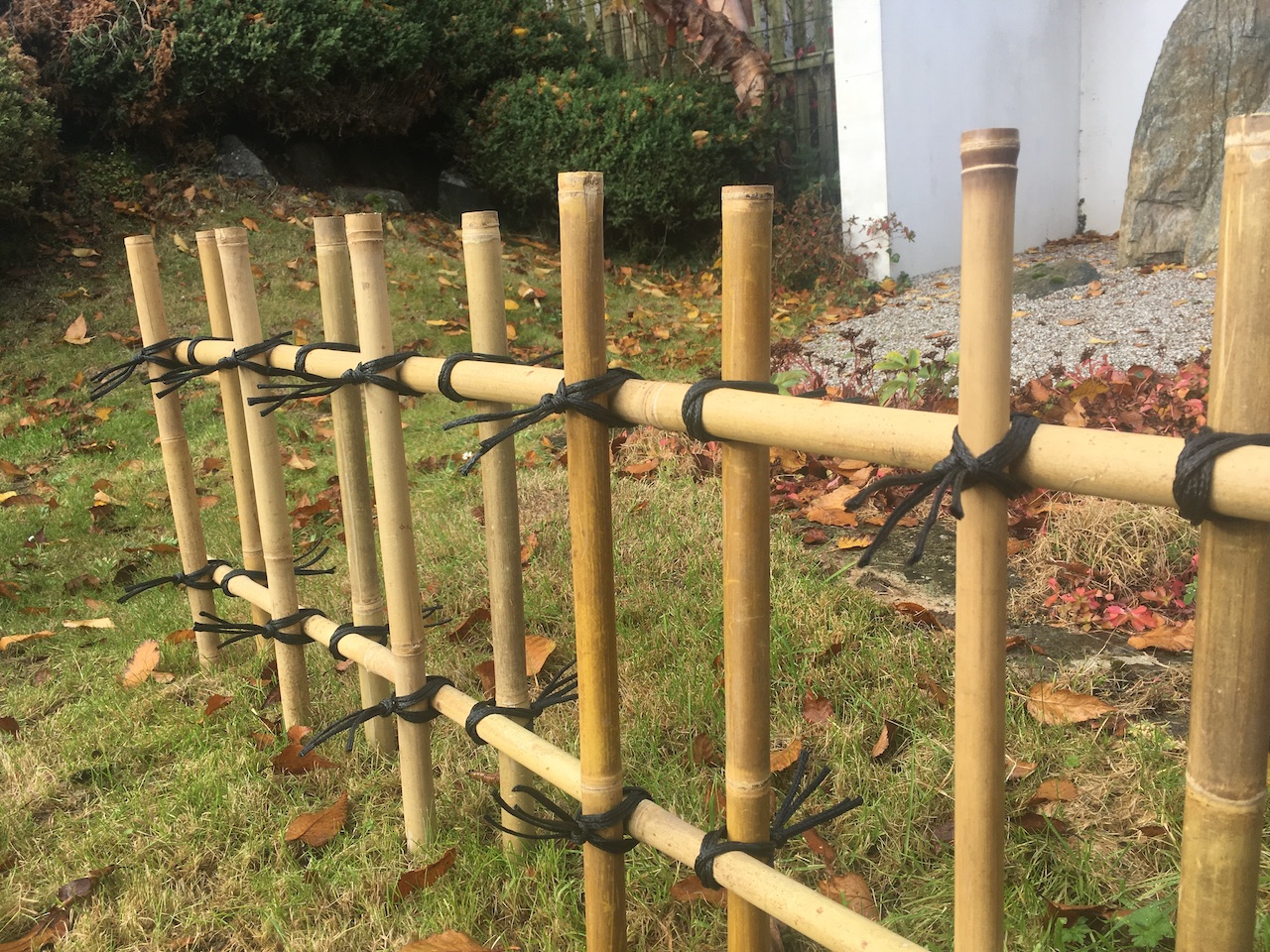Have you ever considered using bamboo for your fencing needs? Bamboo fencing has become quite popular in recent years, and for good reason! Not only is bamboo a sustainable and eco-friendly option, but it also adds a unique and natural look to your outdoor space. In this article, we will dive into all the details about bamboo fencing and explore why it might be the perfect choice for you.
Firstly, let’s talk about the benefits of using bamboo for your fence. Bamboo is known for its incredible strength and durability, making it an excellent option to withstand the elements. Whether you live in a hot and humid climate or a cold and snowy one, bamboo fencing can hold up well against various weather conditions. Additionally, bamboo is naturally resistant to pests and rot, reducing the need for frequent maintenance. Furthermore, bamboo is an abundant resource that grows quickly, making it a sustainable choice for those who are environmentally conscious. In our upcoming blog posts, we will delve deeper into the installation process, design ideas, and maintenance tips for bamboo fencing. So stay tuned and get ready to learn more about this fascinating option for your fence!

All About Bamboo Fencing
Bamboo fencing has gained popularity in recent years due to its unique aesthetic appeal, environmental sustainability, and cost-effectiveness. If you are considering bamboo fencing for your property, this article will provide you with a comprehensive guide on what bamboo fencing is, its types, the installation process, maintenance and care tips, benefits and drawbacks, comparisons with other materials, legal considerations, and various design options.
What is Bamboo Fencing
Understanding the concept of bamboo fencing
Bamboo fencing is a type of fencing made from the bamboo plant. It is an eco-friendly alternative to traditional fencing materials such as wood or vinyl. Bamboo fencing offers a natural and tropical look to any outdoor space and can enhance the overall aesthetic appeal of your property.
Benefits of choosing bamboo as a fencing material
One of the main benefits of bamboo fencing is its sustainability. Bamboo is a renewable resource that grows rapidly, making it an environmentally friendly option. Additionally, bamboo is known for its durability and longevity, making it a cost-effective investment for your property. It also provides added privacy and serves as a natural barrier against harsh weather conditions.
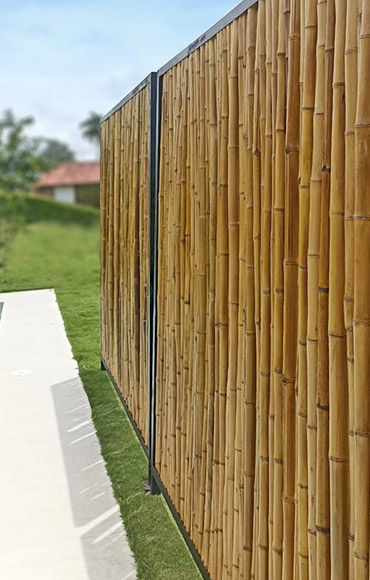
Types of Bamboo Fencing
There are several types of bamboo fencing available in the market, each with its own unique characteristics and applications. Understanding the different types will help you choose the right bamboo fencing for your specific needs.
Rolled bamboo fencing
Rolled bamboo fencing consists of individual bamboo poles connected with galvanized wire. This type of fencing is easy to install and provides a seamless and continuous look. It is perfect for creating privacy screens or covering unsightly areas in your outdoor space.
Bamboo panel fencing
Bamboo panel fencing involves the use of larger bamboo poles that are attached to a wooden or metal frame. This type of fencing offers a more structured and solid appearance. It is commonly used for boundary fencing or as a decorative element in gardens.
Bamboo slat fencing
Bamboo slat fencing features narrow bamboo strips that are tightly woven together. It provides a contemporary and sleek look to your fencing. This type of fencing is often used for modern or minimalist outdoor designs.
Bamboo cane fencing
Bamboo cane fencing is made by binding together individual bamboo canes. It offers a rustic and natural appearance and is commonly used for creating fence panels or dividers in outdoor spaces.
Installation Process
Installing bamboo fencing requires careful preparation and the right tools and materials. Following a step-by-step installation guide will ensure a successful and long-lasting bamboo fence.
Preparing the area for bamboo fencing
Before installing bamboo fencing, it is important to clear the area and remove any existing debris or vegetation. This will provide a clean and stable foundation for your fence. Additionally, measuring and marking the boundaries of the fence will help ensure accurate installation.
Tools and materials required for installation
To install bamboo fencing, you will need a few essential tools and materials. These typically include a measuring tape, string or chalk line, post hole digger or shovel, concrete mix, screws or nails, and a power drill or hammer.
Step-by-step guide to installing bamboo fencing
- Measure and mark the boundaries of the fence.
- Dig the post holes or trenches according to the desired spacing.
- Install the fence posts or frames securely in the ground using concrete or gravel.
- Attach the bamboo rolls, panels, slats, or canes to the posts or frames using screws or nails.
- Ensure the bamboo fencing is evenly spaced and leveled.
- Secure any loose ends or connections to prevent sagging or damage.
- Apply protective coatings or treatments, if desired, to enhance durability and longevity.
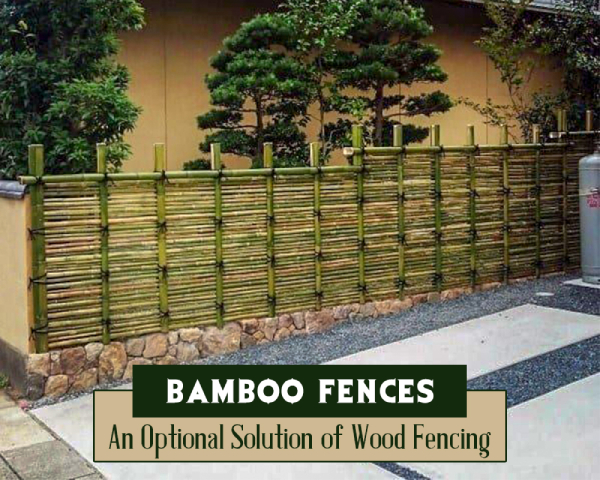
Maintaining and Caring for Bamboo Fencing
To ensure the longevity and beauty of your bamboo fencing, it is important to maintain and care for it properly. Regular cleaning, preventive measures against rot and damage, and the application of protective coatings will help preserve the quality of your fence.
Cleaning and removing debris from bamboo fencing
Regularly cleaning your bamboo fencing is essential to prevent the accumulation of dirt, dust, and debris. Using a soft brush or cloth, gently scrub the surface of the fence to remove any grime. Rinse with water and allow it to air dry completely.
Tips for preventing rot and damage
To prevent rot and damage, it is important to keep moisture away from the bamboo fencing. Avoid installing the fence in low-lying areas prone to water accumulation. Additionally, applying a waterproof sealant or treatment can help protect the bamboo from moisture and prolong its lifespan.
Applying protective coatings and treatments
Applying protective coatings or treatments to your bamboo fencing can enhance its durability and resistance to weathering. Clear or tinted sealants can be used to protect the bamboo from UV rays, humidity, and insect infestation. It is recommended to reapply these coatings annually or as per the manufacturer’s instructions.
Benefits of Bamboo Fencing
There are numerous benefits associated with choosing bamboo fencing for your property. Understanding these advantages will help you make an informed decision.
Environmental sustainability
Bamboo is a highly sustainable material due to its rapid growth and ability to regenerate quickly. Choosing bamboo fencing contributes to the preservation of forests and reduces the demand for traditional wood products.
Durability and longevity
Bamboo is known for its strength and durability. When properly maintained, bamboo fencing can withstand varying weather conditions, including sun, rain, and wind. It is resistant to warping, cracking, and splitting, making it a long-lasting fencing option.
Aesthetic appeal
Bamboo fencing adds a natural and tropical touch to any outdoor space. It complements various architectural styles and landscaping designs. The warm tones and unique texture of bamboo create an inviting and visually appealing atmosphere.
Cost-effectiveness
Compared to other fencing materials, bamboo fencing is relatively affordable. It offers great value for money due to its durability and low maintenance requirements. Additionally, its installation process is typically simpler and quicker, resulting in cost savings.
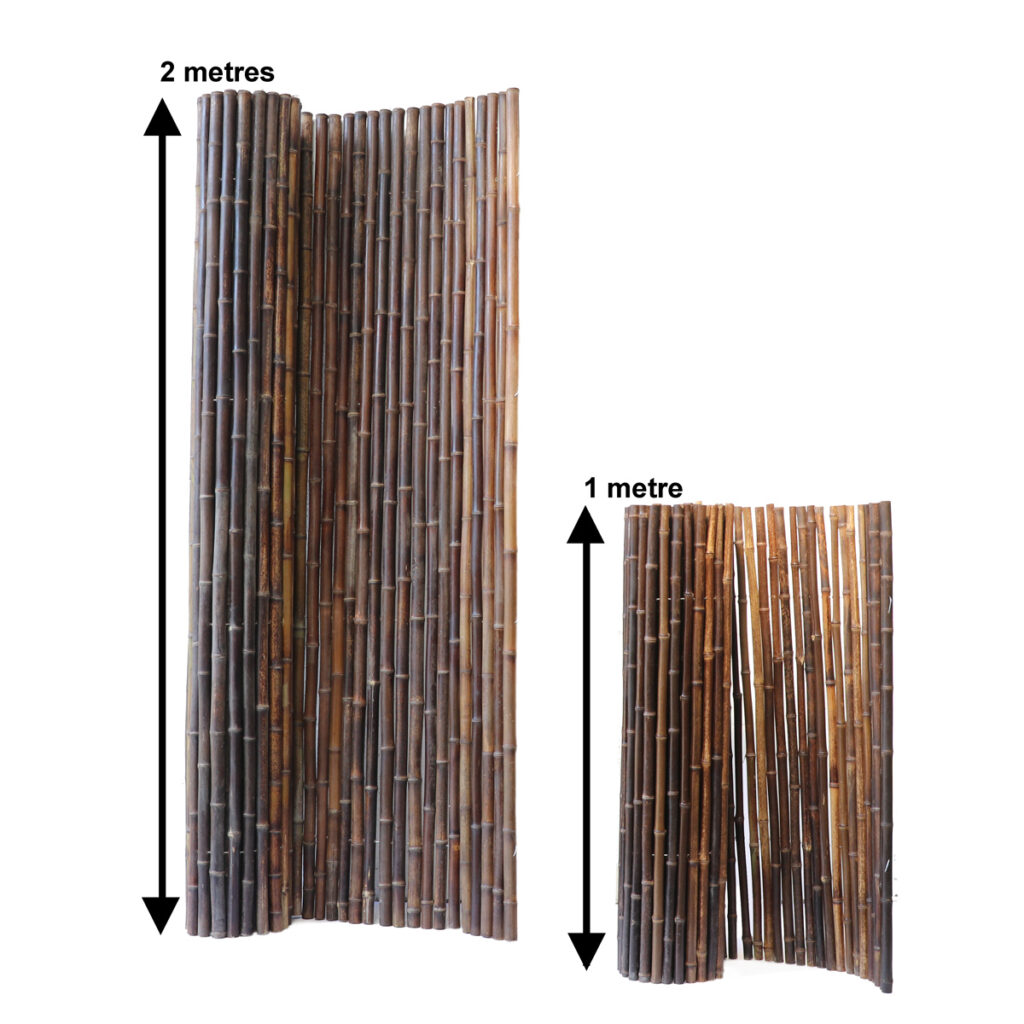
Drawbacks of Bamboo Fencing
While bamboo fencing has numerous advantages, it is important to consider the potential drawbacks before making a decision.
Susceptibility to weather conditions
Bamboo fencing may be susceptible to weathering, especially in extreme climates. Exposure to excessive moisture or intense sunlight can lead to fading, discoloration, or even structural damage. Regular maintenance and protective measures can mitigate these effects.
Prone to insect infestation
Since bamboo is a natural material, it is susceptible to insect infestation, especially in humid environments. Regular inspections and the application of insecticides or natural repellents can help prevent or address these issues.
Limited design options
Unlike other fencing materials, bamboo has limited design options. While it offers various styles and types, it might not provide the same degree of customization as materials like wood or vinyl. However, creative use of bamboo fencing in combination with other materials can overcome this limitation.
Maintenance requirements
Bamboo fencing requires regular maintenance to ensure its longevity and visual appeal. This includes cleaning, resealing, and addressing any signs of damage promptly. Failure to maintain the fence can result in accelerated wear and potential replacement costs.
Comparing Bamboo Fencing with Other Materials
To make an informed decision, it is important to compare bamboo fencing with other popular fencing materials.
Bamboo fencing vs. wood fencing
Bamboo fencing offers similar natural aesthetics to wood fencing but is generally more cost-effective and sustainable. While wood fencing may have more design options and can be easily customized, it requires regular staining or painting and is prone to rot or termite damage.
Bamboo fencing vs. vinyl fencing
Vinyl fencing is known for its durability and low maintenance requirements. However, it lacks the natural and organic appeal of bamboo fencing. Vinyl fencing may also be more expensive and difficult to repair compared to bamboo fencing.
Bamboo fencing vs. chain-link fencing
Chain-link fencing is a popular choice for security purposes. However, it may lack the aesthetic appeal and privacy provided by bamboo fencing. Additionally, chain-link fences require more maintenance and are less eco-friendly than bamboo fencing.
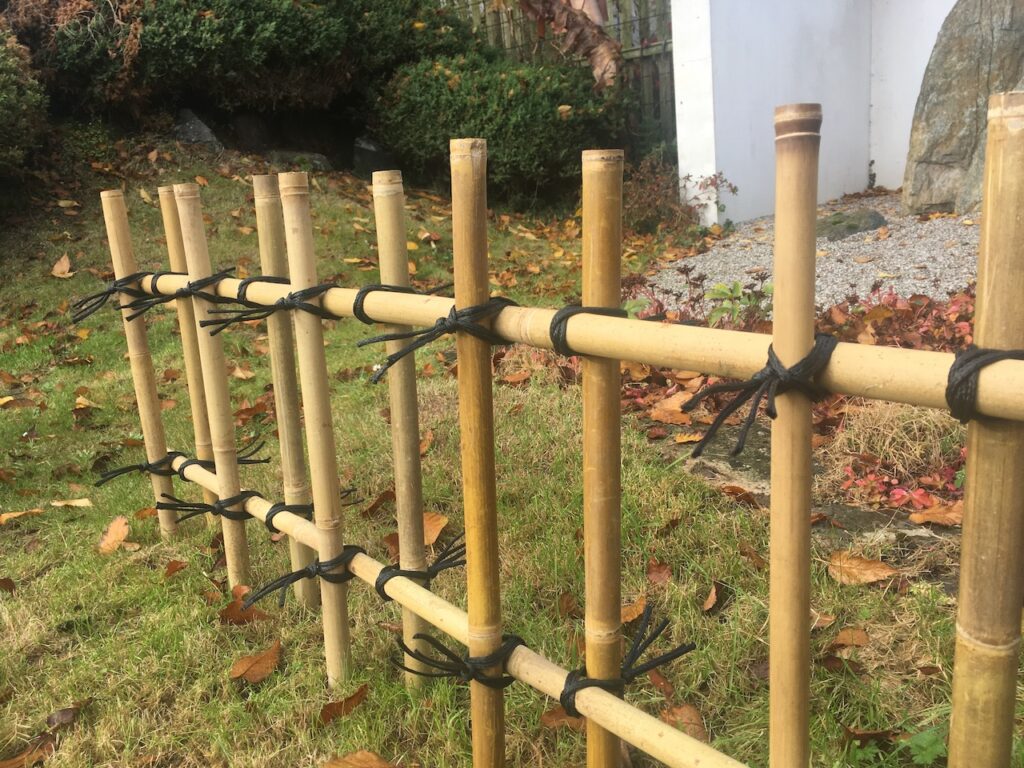
Legal Considerations and Permits
Before installing bamboo fencing, it is crucial to check local regulations and obtain the necessary permits. Some areas have specific guidelines regarding fence height, materials, and setbacks. Compliance with these regulations will ensure a hassle-free installation process.
Checking local regulations and codes
Different jurisdictions have specific regulations and codes regarding fences. It is important to research and understand these guidelines to avoid any legal issues or costly modifications in the future. Local building departments or homeowner associations can provide the necessary information.
Obtaining necessary permits for installing bamboo fencing
In some areas, obtaining permits may be required for fence installations. This ensures that the fence meets safety and aesthetic standards. Contacting the local authorities or building department can provide information on the necessary permits and the application process.
Use of Bamboo Fencing in Different Settings
Bamboo fencing is versatile and can be used in various settings, including residential, commercial, industrial, and agricultural applications.
Residential applications of bamboo fencing
In residential settings, bamboo fencing can be used to create privacy screens, enhance the aesthetics of gardens, or define property boundaries. It can also be used as a partition for different outdoor zones or to enclose swimming pools or patios.
Commercial and industrial uses of bamboo fencing
Bamboo fencing can be utilized in commercial or industrial settings to create a unique and eco-friendly appearance. It can be used for outdoor seating areas, restaurant patios, retail storefronts, or as a backdrop for events and exhibitions.
Bamboo fencing for agricultural purposes
Bamboo fencing is suitable for agricultural purposes such as livestock enclosures, crop protection, or garden perimeters. Its natural appearance blends well with rural environments and offers a sustainable and cost-effective alternative to traditional agricultural fencing materials.
Design and Decorative Options
Bamboo fencing offers various design and decorative options to suit different styles and preferences. Exploring these options will help you find the perfect bamboo fencing design for your outdoor space.
Different patterns and styles of bamboo fencing
Bamboo fencing can be woven or arranged in different patterns to create unique visual effects. From standard horizontal or vertical arrangements to herringbone, lattice, or staggered designs, there is a range of options to choose from.
Combining bamboo fencing with other materials
To enhance the durability and versatility of your bamboo fencing, consider combining it with other materials. Mixing bamboo with wood, metal, or glass can create interesting contrasts and artistic elements in your fence design.
Adding decorative elements to bamboo fencing
Incorporating decorative elements such as plants, lighting fixtures, or ornaments can further enhance the aesthetic appeal of your bamboo fencing. Climbing plants or hanging baskets can add a touch of greenery, while decorative lights can create an inviting atmosphere.
Tips for Extending the Lifespan of Bamboo Fencing
To maximize the lifespan of your bamboo fencing, follow these tips and techniques for proper installation and regular maintenance.
Proper installation techniques
Ensure that your bamboo fence is installed correctly and securely. Properly aligning the fence posts, using adequate concrete or gravel for stability, and ensuring even spacing will prevent sagging, leaning, or premature wear.
Regular maintenance practices
Regularly inspect your bamboo fencing for signs of damage, insect infestation, or rot. Promptly address any issues by repairing or replacing damaged sections. Additionally, clean the fence periodically and reapply protective coatings or treatments as needed.
Protective measures against weathering
Protect your bamboo fencing from excessive weathering by positioning it in areas with adequate shade or implementing shading solutions. Applying a UV-resistant sealant or treatment can also help prevent discoloration or fading due to sun exposure.
Common Issues and Troubleshooting
Understanding common issues related to bamboo fencing will help you troubleshoot problems and maintain the integrity of your fence.
Dealing with bamboo splitting or cracking
Bamboo can split or crack due to changes in temperature, moisture levels, or natural aging. To address this issue, you can apply a bamboo repair solution or fill gaps with epoxy or wood filler. Regular sealing and preventive maintenance can also minimize splitting or cracking.
Repairing damaged sections of bamboo fencing
If a section of your bamboo fencing gets damaged, it is important to repair it promptly to prevent further deterioration. Assess the extent of the damage and replace the affected bamboo canes, slats, or panels. Securely attach the new pieces to ensure a seamless look and structural integrity.
Handling discoloration and fading
Over time, bamboo fencing may experience discoloration or fading due to sun exposure or weathering. Applying a bamboo stain or sealant with UV protection can help restore the natural color and prevent further fading. Regular cleaning and maintenance will also slow down the discoloration process.
Conclusion
Bamboo fencing offers a unique and sustainable alternative to traditional fence materials. With its environmental benefits, durability, aesthetic appeal, and cost-effectiveness, it is becoming an increasingly popular choice for homeowners and businesses alike. By understanding the different types, installation process, maintenance requirements, and design options, you can make an informed decision and enjoy the beauty and functionality of bamboo fencing for years to come.
